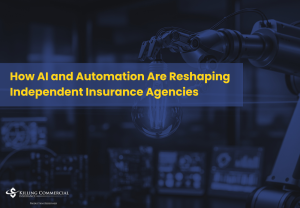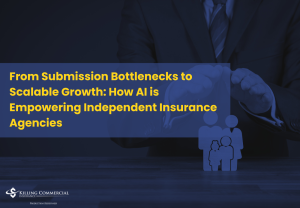In this episode of Power Producers Shoptalk, David Carothers discusses the importance of shifting away from selling on price and focusing instead on the total cost of risk (TCOR). Carothers emphasizes that insurance producers must position themselves as trusted advisors by addressing not only insurance premiums but also uninsured losses, compliance costs, safety program investments, and indirect costs such as reputational damage and employee downtime. He offers five critical questions that producers can ask at the point of sale to differentiate themselves from competitors and provide value to their prospects by focusing on long-term risk management and business operations.
David highlights the power of understanding a client’s operations, recounting a personal experience where he helped a resort reduce their high workers’ compensation mod by improving operational efficiencies. He stresses the importance of asking the right questions to uncover hidden risks and developing solutions that prevent losses, thus lowering long-term insurance costs. The episode concludes by encouraging producers to adopt a proactive approach, offer value-added services, and leverage their insights to establish deeper client relationships, especially in a hard market.
Key Points
Stop Selling on Price
Producers need to focus on total cost of risk (T-Core) instead of just competing on premiums. This strategy positions you as a trusted advisor and improves long-term risk management for clients.
Value of Power Producer Base Camp
The podcast introduces Power Producer Base Camp, a program for individual producers designed to provide support and coaching, distinct from the larger Killing Commercial platform.
Focus on Comprehensive Risk
Insurance premiums are only part of the overall cost of risk. T-Core includes uninsured losses, compliance costs, safety program investments, and indirect costs like reputational damage. Producers need to highlight the full scope of risks to add value.
Examples and Stories
Real-life examples, like identifying inefficiencies in a resort’s housekeeping or missed opportunities in manufacturing, showcase how addressing T-Core improves business performance and mitigates risks.
Critical Questions to Ask:
- What are your top operational risks?
- How do losses and claims impact your business?
- What risk management strategies are in place?
- Have you evaluated the long-term costs of choosing lower insurance limits or excluding critical coverages?
- Would you allow me to calculate your total cost of risk?
Addressing Objections
Clients may want to reduce insurance costs by adjusting limits or exclusions, but producers should help them understand the risks of doing so and propose solutions like raising deductibles instead.
Long-Term Client Relationships
By focusing on reducing T-Core, producers can establish long-term relationships with clients, creating fewer claims, lower uninsured losses, and more favorable premiums over time.
Differentiation and Execution
Producers must differentiate themselves from competitors by offering proactive solutions, implementing risk management strategies, and ensuring clients see them as trusted advisors.
Connect with:
Visit Websites:









